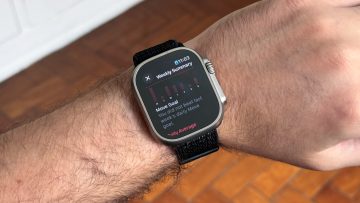There is a certain breed of tech fanboy out there who views technology products much the way a snooty art student sees the works of famous avant-garde painters: That is, a tech product must be superior if it has been rejected by the masses of consumers who are too stupid to appreciate its true brilliance. Nowhere has this phenomenon been more apparent than with diehard fans of Windows 8, Microsoft’s attempt at fusing a desktop operating system with a touch-centric OS that has been so polarizing that Microsoft employees have reportedly started calling it “the new Vista.”
Forbes contributor Tony Bradley does his best to encourage Microsoft to stay the course with its original Windows 8 vision in a new column blasting longtime Windows users who are supposedly resisting the future by refusing to upgrade from Windows XP or Windows 7. His argument boils down to the fact that people hate change at first but will eventually adapt once they get over their initial gripes.
“The reality is that Windows 8 is every bit as awesome as Windows 7, along with a slew of new features and capabilities that make it more powerful and more flexible for those who choose to invest the time to become familiar with them and embrace them,” he writes in his stirring conclusion. “The moral of the story: ‘This too shall pass.’ A few years from now that crazy tiled Modern / Metro UI will be engrained as ‘normal,’ and if Microsoft dares to mess with it there will be hell to pay.”
Unsurprisingly, Bradley’s attack on the critics misses the big problem with Windows 8: It’s not just that the new platform is different but that it can be ridiculously unintuitive for desktop users. How do we know that Windows 8 is an unintuitive mess for desktop fans? Largely because Microsoft is going out of its way to make the platform much more friendly to desktop users who have felt alienated by the changes the company has made.
For example, consider that Windows 8.1 Update 1 will now add both a universal search button and a power button to the main Live Tiles screen. Recall that the Live Tiles screen was supposed to act as the replacement for the classic Start menu and act as a hub for all essential PC functions. However, two of the most basic functions of any PC — search and power — were relegated to a sidebar on the Live Tiles screen that you can only access by doing a right-to-left swipe on the right-hand side of the display. And if you’re using a mouse to access this sidebar you have to click it on a tiny little box on the lower right-hand corner to make it pop up.
While this may seem like a minor annoyance, Windows 8 is full of such minor annoyances and they all add up, particularly if you don’t like using a touch display. Windows 8 diehards will insist that desktop-loving “whiners” can avoid all this by downloading apps such as Classic Shell and StartMenu8 to bring back the classic Start menu. While this is certainly true, you have to ask yourself why you should bother to spend money upgrading to a system where you’ll have to download third-party applications just to make it function as Microsoft should have made it function in the first place.
Thankfully, Microsoft is way too smart to listen to Windows 8 diehards. It knows that alienating a big chunk of its user base is bad business and is taking steps to make changes to Windows 8 that will keep many of its positive features but will add new features to make it much more user-friendly to the mouse-and-keyboard crowd.
Tech companies are not misunderstood artists. The bottom line matters to them and if a huge chunk of their user base rejects the changes they make they will respond accordingly to address them.






